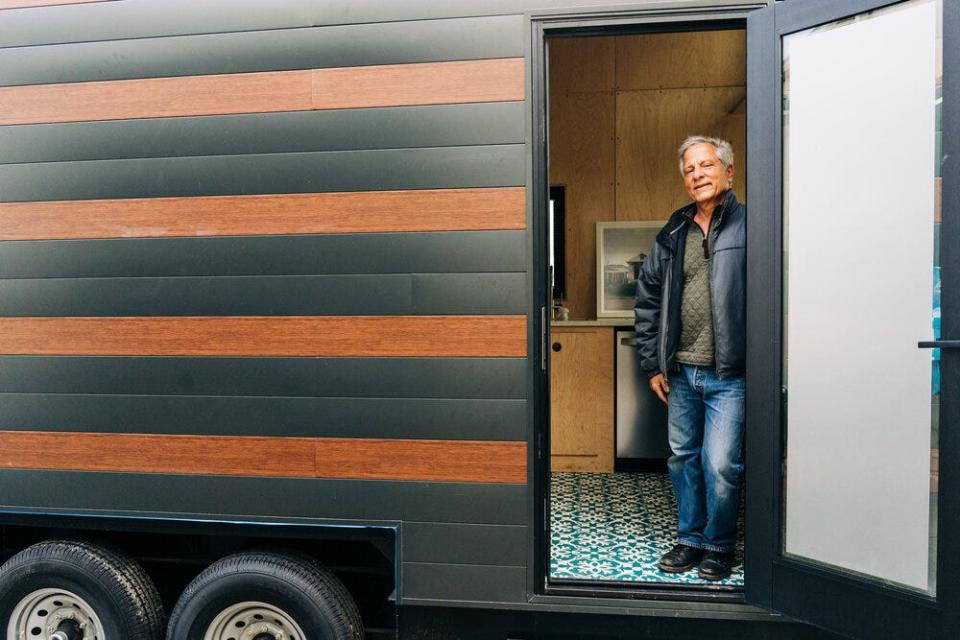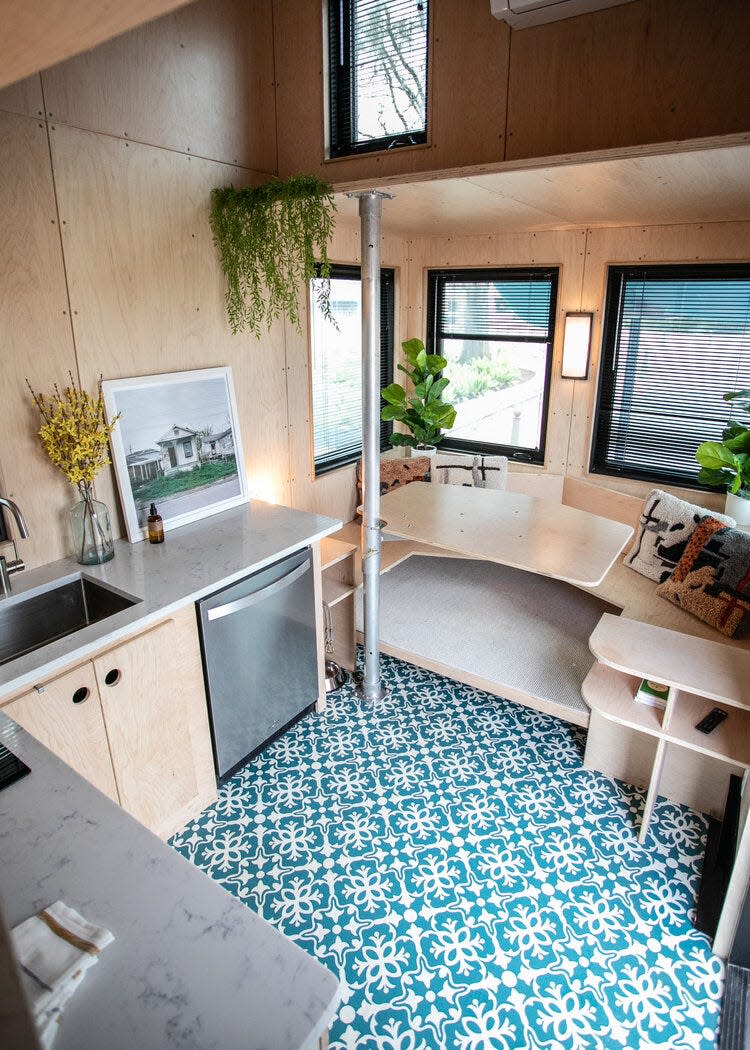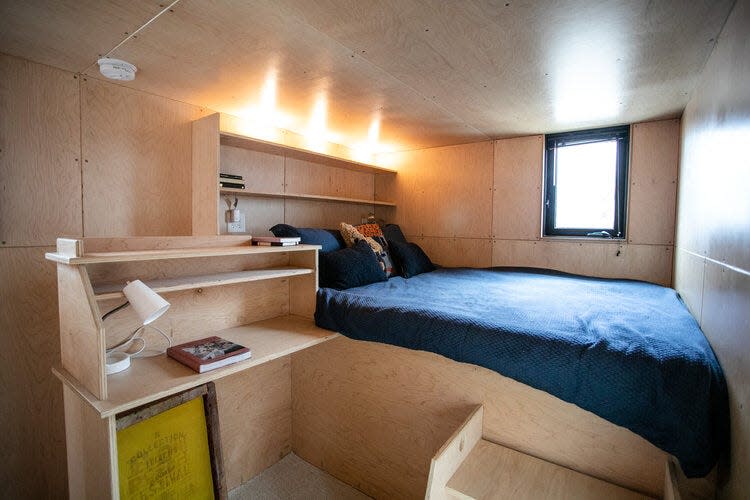Are tiny homes the solution to Walton's workforce housing issue? Seaside developer thinks so
- Oops!Something went wrong.Please try again later.
SEASIDE — Andres Duany, the architect and urban planner who designed the Walton County community of Seaside, has begun turning his attention to a pressing need for workforce housing.
His developing solution, outlined in front of a small group of local business people, community activists and others Monday at the Seaside Assembly Hall, is a new take on "tiny houses," easily portable structures that can be built elsewhere and brought to the community and placed on raw land or even in parking lots.
Traditional approach lacking: Walton residents protest affordable housing proposal
Fried on affordable housing: Nikki Fried visits Crestview, Pensacola to talk about Florida's affordable housing crisis
Tiny home, huge price tag: A 196-square-foot home in Santa Rosa Beach is listed at $1 million. Take a peek inside.

Duany settled on his new approach to tiny houses after attending a conference some time ago in St. Augustine, where he said he saw a lot of enthusiasm for lifestyles involving homes measured in just a few hundreds of square feet, but also saw a lack of efficient design.
Subsequently, through his No Nonsense Housing Company, Duany optimized a 400-square-foot living space that can accommodate as many as four people. Duany's design offers two bedrooms, two full baths and space for a washer and dryer.
"This is absolutely targeted to young employees," said Duany, who added that "it's just a bridge" in housing options and may ultimately represent only "a small market segment."
But he suggested that such residences, at an estimated all-in cost of $80,000, could be bought by employers and offered as a benefit to workers. In turn, those employers could use the tax advantages of depreciation in connection with the homes, he said.
"It's not a house, it's equipment," Duany said, prompting the business people in the small audience to look at his structures differently from other housing options.

It's an idea that Jim Shirley — who owns the Great Southern Café, 45 Central Wine & Sushi Bar, The Meltdown on 30A, The Bay, Farm & Fire and North Beach Social restaurants, and co-owns a number of other restaurants — would consider, he said in a brief interview after Duany's presentation.
"We want them to be happy," Shirley said of his workers, and added that providing housing as a benefit of employment also could entice particularly talented people to work at his restaurants.
His comments came after he and other business owners recounted tales of employees who commute to work from as far away as DeFuniak Springs, 30 miles from Seaside, Navarre, 50 miles away, and Crestview, nearly 60 miles from Seaside.
Residents against development: 'It does not work for us': Neighbors turn out in force against Botanic Miramar mixed-use project
A major reason for the lower cost of the homes, Duany said, is that they can be built in places where costs for skilled construction labor are much lower than in Walton County — where many craftsmen can earn three figures per hour — and then transported to the place where they'll be used.
"When your cross the Florida line (from neighboring states), it (the cost of a tiny home) goes from $90 a square foot to $250 a square foot," Duany said.
Once in place, the wheels and axles would be removed from the home and it could be set on a foundation as simple as the large concrete dividers used on some freeways. Beyond that, a simple porch could be added, Duany said.

Affordable housing issues in Walton County are being addressed largely by developers offering some units in traditional apartment complexes at reduced rates in return for being allowed to develop their properties more densely than might otherwise be allowed.
"Affordable housing is never affordable, it's just subsidized," Duany said of those kinds of traditional approaches to the issue.
During his presentation, Duany showed a site plan for a tiny house development off State Road 20 in Freeport comprising 75 homes. The project was stalled during the COVID-19 pandemic and remains in limbo while a development partner in Colorado continues to consider its viability, he said.
In the meantime, Duany said the small size of the homes means that they can be arranged on tracts with significant wetlands in a way that doesn't disturb those wetlands. That would be an advantage in much of Walton County, where wetlands shape the course of a lot of residential development.
For the moment, Duany is taking a low-key approach to his advocacy of tiny homes as a response to the county's affordable housing issues. It's likely that for the immediate future, he'll meet with more business people to talk about his approach, he said.
Beyond that, Duany is at least thinking about bringing a tiny home to the county for possible display at some public venue to introduce the concept more widely.
This article originally appeared on Northwest Florida Daily News: Seaside developer proposes tiny homes as affordable housing in Walton

